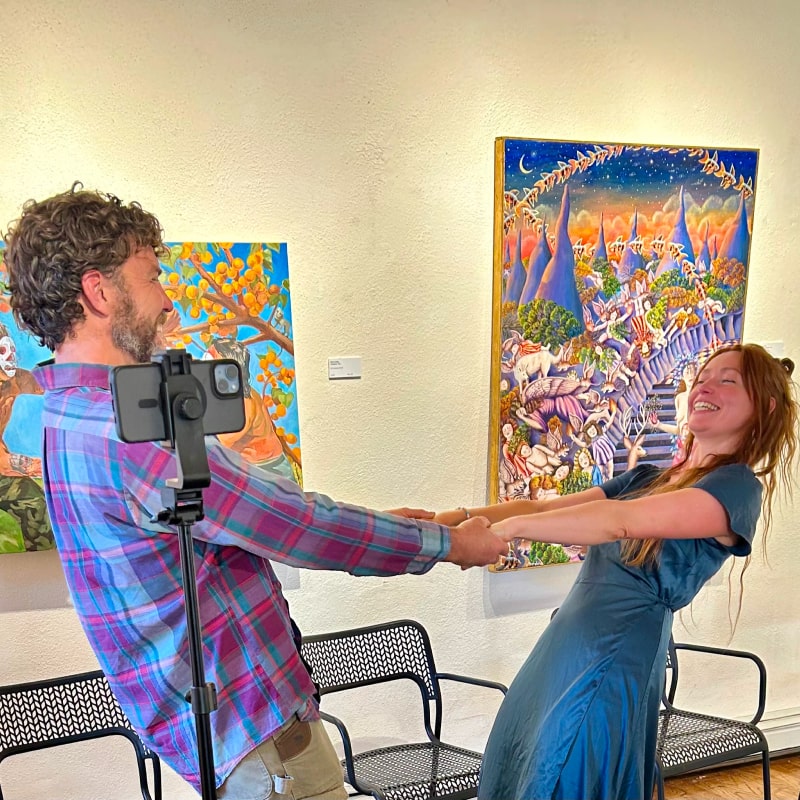What is time banking?
The fundamental principle of time banking is that it is a relational economy in an interdependent community, and that everyone’s time is valued equally. It’s the time that you give and the time that you receive that counts. One hour of service rendered earns one hour of time credit, irrespective of the service provided.
The type of services exchanged can vary widely—common examples include tutoring, childcare, home repairs, cooking, transportation, and companionship. The focus is on skills and support that individuals can offer and receive within their community. Participants earn time credits for the services they provide to other members of the TimeBank. For example, if you help someone with gardening for one hour, you earn one time credit. These credits can then be used to “purchase” services from a host of services offered by other members, thus allowing members to receive help based on their needs.
A coordinator or organizing committee usually oversees a time bank, helping to match requests with offers, maintain the records of time credits, and facilitate community events. Technology (like online platforms or apps) is often used to track transactions and connect members efficiently.
Many types of time banks exist all over the world. To find out more about other models and available resources, check out timebanks.org.

Why is time banking important for today?
Edgar S. Cahn, founder of modern time banking, stated that Americans today face at least three interlocking sets of structural barriers: 1) a deep lack of access to basic goods and services by those with low income; 2) deep social problems stemming from our society's need to rebuild community networks; and 3) a deep disillusion with public programs designed to address these problems.
Cahn believed many social programs fail when they do not enlist the help of those they try to help. Cahn called this a “deficit based approach” to social service, where orgs view those they’re trying to help only in terms of their needs, as opposed to an asset based approach, which focuses on the community contributions that everyone can make.
Cahn realized timebanking, through relational currency and networking, could rebuild the infrastructure of trust and caring in a community. Time banking "would enable communities to become more self-sufficient and tap the capacity of individuals who'd been dismissed.”
Why time banks fail
Time banks can stumble when engagement drops, logistics falter, or structure is unclear. Common pitfalls include:
- Low Participation & Community Buy-In
Without enough active members or community support, the system lacks the energy and trust needed to sustain exchanges. - Operational Gaps
Poor record-keeping, unclear rules, and disputes over time credits can erode trust and lead to burnout or disengagement. - Imbalance of Services
Matching offers with needs isn’t always easy. When the system feels lopsided, members can lose interest. - Safety, Equity & Inclusion Concerns
Concerns about safety, privacy, or fairness—especially across gender and socioeconomic lines—can keep folks from joining or staying. - Leadership & Resources
Without consistent funding or strong coordination, even the best ideas can lose momentum.
Why we believe ours will succeed
We’ve studied why others struggled—and designed Taos TimeBank to thrive:
- It’s Mutual, Not Just Charitable
This isn’t a volunteer hub—it’s a relationship-based exchange where members earn real services they value. It’s community-serving and self-serving. - Sustainable Staffing Model
Low annual dues support a light layer of paid coordination—keeping things organized, welcoming, and active. - Robust, Professional Tech
We’re using time-tested software built specifically for time banks and maintained by experts. - Events that Build Belonging
Twice a year, we host gatherings that deepen member bonds through food, fun, and fellowship. - Anchor Projects That Energize
Seasonal service opportunities help replenish the credit pool and re-energize participation—keeping our local sharing economy dynamic.
